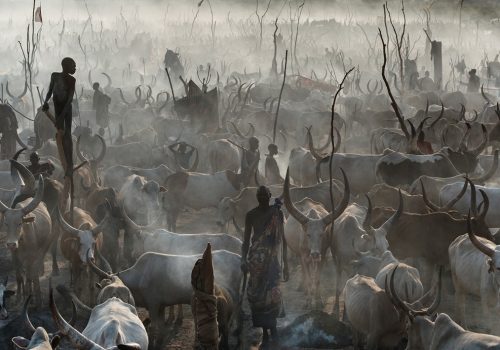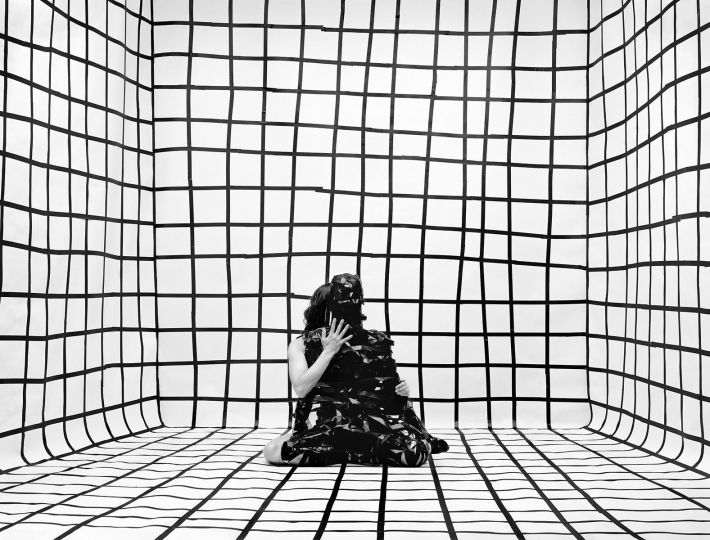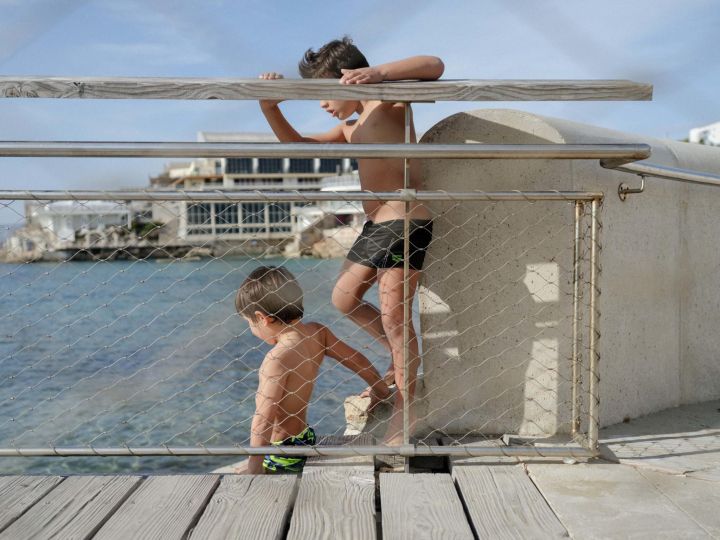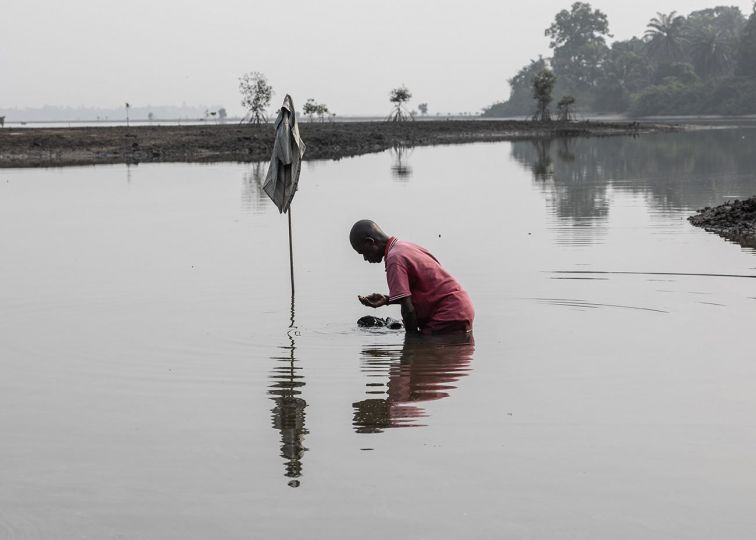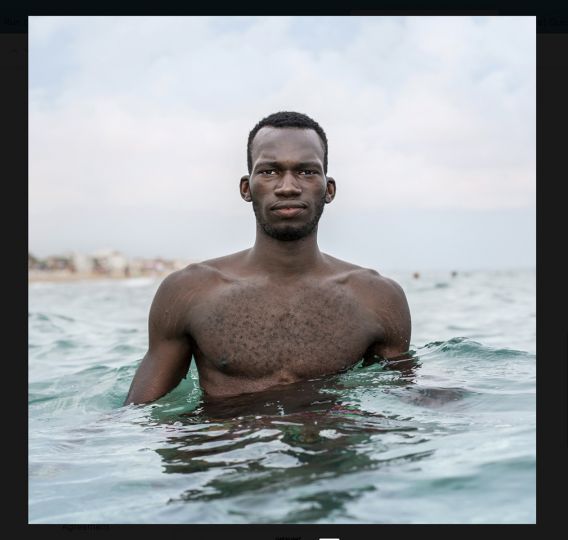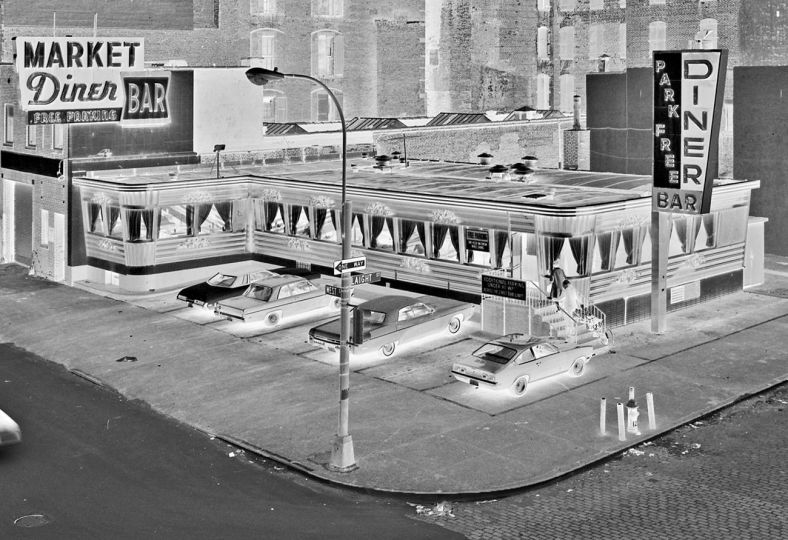David Yarrow was born in Scotland in 1966 and is currently based in London. He began his photographic career recording the world’s greatest sporting events. He was named Young Scottish Photographer of the Year at the age of 20 and covered the World Cup in Mexico for The Times; his photo of footballer Maradona holding the trophy aloft remains an iconic image. Yarrow has since turned his lens on the natural world to capture its harsh and endangered beauty. African imagery is at the heart of the project entitled Encounter. Yarrow’s photographic travels have given him genuine insights into key environmental and geopolitical issues. Yarrow continues to travel throughout the world photographing many of the planet’s most remote and beautiful locations.
How did your passion for photography begin?
I always wanted to be a sportsman, but I wasn’t that good at it. I thought if I can’t compete, then the next best thing I can do is photograph people who are competing. I went out to Mexico for the World Cup in 1986 when I was 18 because the journalists in the union were on strike, and I wasn’t in the union, so I got to go. The sun was very high at the final match, but I got a great shot of the Argentine footballer Maradona that was published extensively. Before I knew it, I was an accredited photographer and on every pitch. All Sport hired me as a photographer for the Olympics in 1988 and I also had some great images from the skiing championships in Switzerland that year as well.
Why did your focus change to that of wildlife and cultural photography?
I think, as you get older, that you photograph best what you’re most interested in. When I was young, I photographed sport because I loved sport. Then as I got older, I photographed landscape because I was changing and I was more mature with my analysis and my eye. Landscape, wilderness escapism, and the final frontier have always interested me. I kind of arrive somewhere and have to get a map out and I think that no one I know has ever been there before and that’s very exciting to me. In 2015 in terms of taking a picture of the Eiffel Tower, you have to be very clever to do something that hasn’t been done before, so more remote places are very appealing to me.
What makes your work different or unique from other photographers shooting in Africa?
As Capa said, “It’s best to be as close to your subject as possible,” so for instance I’ll never take a telephoto lens. You only take a telephoto lens if you feel that animals, like polar bears, are a fatal threat. I think the best lens for portraiture is a 35mm lens, and if it’s the best lens for portraiture, then it should be the best lens for a lion or a cheetah and I always try to photograph against the light. Then the issue is how you can logistically capture that. I think the Internet makes things so much easier because you do an awful lot of research on it. Before I went to South Sudan, I must have spent fifty hours researching. You look at the best pictures that were taken there and figure out what other people got wrong. That was how I got the idea of taking a ladder to South Sudan because while I realized that some of the pictures were good, their perspective was wrong because they were still too low. I am also very conscious of the fact that decisive moments in wildlife, like the kill, are documentary rather than necessarily fine art. I have a great photo of a shark and it’s a tremendous moment, but I think with a lion kill for instance it’s a bit too gruesome. Also, far too many people take far too many photographs. If I can take three or four good wildlife pictures a year, I’ll be very happy. Otherwise it would be too easy and everyone could do it. It’s said that photography is the alignment of the eye, the head, and the heart. Of course, the eye matters with composition, I have to use my head quite a lot in terms of logistics and preparation, and I have to try to convey some soul and compassion through my heart by providing a sense of the place. The wide angle helps with a sense of the place because a telephoto with the compression of distance doesn’t quite capture it.
So what you do is two-fold: it’s logistical and also researching what’s already been done before?
Exactly. So you borrow from the best and you learn from the mistakes people have made. So for my next trip to Bangladesh, I’ve spent more time on the Internet about Bangladesh, more than anything else I’ve seen in the last six weeks. I know what I’ll be doing: the dangers, the red tape, the clothing, the lenses, and everything else I need to be successful. I’m photographing ship breaking right on the shores of a place called Chittagong. There’s not really an easy way to get to Chittagong, so it puts off a lot of people. The road is less traveled.
Can you tell us about your work with remote-cameras?
I think the first thing is the understanding of using wide angles and working from the ground up. If I’m photographing from six feet up in the air from a jeep, it hints at an artificial encounter. That’s where most photographs are, so I’ve got to be on the ground. The two most important things are to be in places where I’m allowed to do that and get out of the car or jeep and set remotes up. Clearly it lends itself to animal behavior that is predictive because if you were doing it with animals that weren’t predictive, how would you set up the camera and then just hope that they would come in its direction? That’s a chance of one in a million, so what we learned is that with different animals you do different things to attract them to the camera. Meat bizarrely doesn’t work. We tried covering the camera with meat and lions just weren’t interested. And then we started to cover it with aftershave. With the aftershave that the old colonials and the Maasai used to wear, the lions were much more interested in the remote cameras. Rhinos are attracted to their own droppings. I would cover the cameras with that and they would just come right over.
Did any of the cameras get destroyed and how far from the cameras are you?
Yes, the lions got away with the cameras from time to time and they have eaten them, but they never ate the flashcard. I’m probably fifty yards away. Now the trick is obviously to be very careful not to press the motor drive too early because they’ll get suspicious of it. You have to wait until the last minute. All these animals and particularly the elephant and the rhino have really good hearing, but not the best eyesight.
Can you tell us about Amboseli, Kenya and what makes it such a special place that you’ve returned so often?
It is a very special place because it’s very elemental, it’s raw, and it’s at. The fact that it’s at and there’s less vegetation means it’s not pretty and you don’t have so many tourists going there. On the dry lake people tend to be working instead of on safari. No one really goes there because it’s hot, it’s dusty, and there isn’t a huge range of wildlife, just a lot of elephants. I think that a lot of people that go away to Africa are entertained by the plurality of everything. As a photographer you go for the singularity and I just want to see one thing and go places just for that. I go to Amboseli to photograph elephants, but also giraffes.
Do your objectives usually change from the type of image you set out to capture and what you end up capturing?
I think it’s important to be spontaneous to what you find rather than have a preconceived notion of what you want to take. Although with Sudan I knew that I wanted a certain amount of biblicality, rawness, and enormity. I’m doing a trip with orcas coming up. With killer whales there’s a certain mystique with them and they’re very beautiful, but its cliché to photograph a killer whale where its head is just out of the water looking around. I want to get them flying towards me and I want to be beneath the whales. Now how do I do that? I’m working with Inuits who know the area west of Vancouver Sound very well and we’ll spend ten days just tracking them and trying to find the circumstances in which they would jump into the air. We want to figure out what makes them do that and make sure that our boat is not in the position where they land on top of it.
So for instance with the image Heaven Can Wait, you went out with the original intention that you wanted to photograph giraffes in Amboseli and then an image like that just kind of happens?
Well there’s a nice little story with that. I actually took my son on that trip and we were giraffe chasing which means we were behind the giraffe trying to photograph which is never easy with an animal. I saw that the late afternoon sun was lighting up the dust he was kicking up and they created a kind of footprint. There was continuity in the photograph because you get five or six footprints with the dust kicking up in the air. That’s how I figured we should be photographing a giraffe with the camera as low to the ground as possible while someone held onto me as I leaned out of the jeep. I didn’t look through the viewfinder because I was holding it in my arm close to the ground as we were following the giraffe into the sun. The skill in that is establishing a composition that could be different and then executing it.
In which project do you believe your patience was most tested?
I went down in August 2014 to photograph some sharks and I spent 35 hours in the water in South Africa, but I got nothing. My conclusion was how great the picture I got of the shark four years ago is. There’s always a tendency to think that your most recent pictures are your best, but sometimes it always helps you to go back and to think how lucky you were. It’s only by having disappointing trips that you can recognize the glory of having a good trip and it puts it all in perspective.
So the first time that you went down for the great whites four years ago, how did you achieve that special image where one is killing a seal?
I was learning and it was a big moment. It was the moment that I knew that I had to go and do it fulltime. I remember when I came back onshore early and I had gotten back to a coffee shop in a town called Simon’s Town in False Bay and I could see on the camera’s LCD screen how pin-sharp the photo was. I remember being quite emotional at the time and thinking, “Wow I’ve got it.” That was the best picture of a shark that I had ever seen, but there were 29 hours beforehand of just bumping around and it’s a very tiring thing in the boat so that I’m as close to the sea as possible. I was three feet above the swell, lying down, and I couldn’t use a tripod or anything. I was holding the lens, which is very tiring on the hands, and I couldn’t let go because the moment that you set the camera down a shark is going to come flying out of the water.
What first comes to mind when I ask you about your most dangerous encounter or most life-threatening situation in the field?
I had a plane crash in Mauritania in the Sahara. I was in a microlight, a kind of plane, and my helmet came off in the wind, it hit the propeller and we went down. We crashed into the Sahara, so if you’re going to crash anywhere the Sahara probably isn’t a bad place because you just glide into a massive sand dune. Then we were in the middle of nowhere and there was blood everywhere. We were photographing camels and camel trains on the dunes with the big shadows. I also met a brown bear and you’re given this guidance as to what to do if you meet a bear head-on, but you never really listen. I met the bear head- on in a forest in Alaska and it was just he and I and the nearest person was a half-mile away. You’re taught to talk to the bear and we were given a safety briefing beforehand. You have to do everything that is counter- intuitive, so you’re not allowed to run away and you have to talk to the bear. Eventually I found myself meeting this bear in the middle of the forest and I’m just saying, “Hello Mr. Bear.” Then I met another one that day and I locked myself in a toilet and thought I’d had enough.
What do you hope people appreciate when they view your images?
It’s a great honor and a privilege to have other people looking at my images. If they can learn about the wonders of the world and to give some balance about what’s hardship and what isn’t, that’s great to me. I have lofty ambitions to take pictures that engage people that weren’t there before and that’s quite a tough feat these days. If I can gain their attention and retain their attention, that’s the height of my objectives. I like to be able to take pictures where people are amazed for whatever reason and haven’t seen something like it before. If they believe that it’s just beautiful or to be amazed how the image was achieved is also gratifying. Conservation is very important and we give ten percent of our income to a conservation charity in the UK called The Tusk Trust. Their objective is awareness. It’s very important that our children can see elephants, and rhinos, and tigers, and lions. It can’t be just to ring fences to get the poachers away because poachers will still exist if a Kenyan can take an ivory horn to the coast and not have to work again in his life. So it’s to try and not give them temptation to do that. It’s from the ground up.
What have you most recently been working on?
I want to photograph people more and more in their natural environment in a kind of biblical way. I’m interested in that. I don’t want to be pigeonholed as a wildlife photographer. I photograph things that happen outdoors, so I don’t think I’ll ever be doing interior design for a Palm Beach magazine. There’re many things to photograph outside as long as it’s different. I’m always trying to get better. I think I’m a better photographer now than I was five years ago because I’m always learning and I’m always looking for that special image.
This interview is part of a series conducted by Holden Luntz Gallery, based in Palm Beach, Florida.
Interviewer: Kyle Harris
Holden Luntz Gallery
332 Worth Ave
Palm Beach, FL 33480
USA

